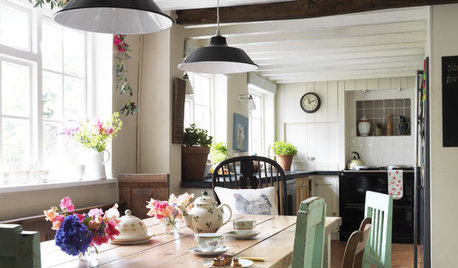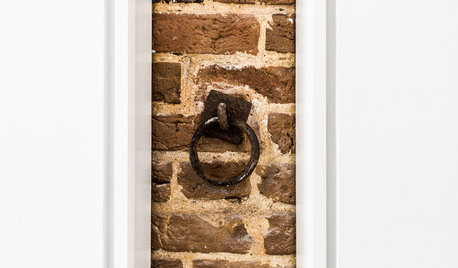I must destroy them!
ssadams7700
13 years ago
Related Stories

PETS5 Finishes Pets and Kids Can’t Destroy — and 5 to Avoid
Save your sanity and your decorating budget by choosing materials and surfaces that can stand up to abuse
Full Story
MOST POPULAR4 Obstacles to Decluttering — and How to Beat Them
Letting go can be hard, but it puts you more in control of your home's stuff and style. See if any of these notions are holding you back
Full Story
HOUSEKEEPINGWhat's That Sound? 9 Home Noises and How to Fix Them
Bumps and thumps might be driving you crazy, but they also might mean big trouble. We give you the lowdown and which pro to call for help
Full Story
LANDSCAPE DESIGNThe 7 Best Plant Types for Creating Privacy and How to Use Them
Follow these tips for using different kinds of plants as living privacy screens
Full Story
LIFEYou Said It: ‘Rather Than Remove Them, They Framed Them’
Design advice, inspiration and observations that struck a chord this week
Full Story
GREAT HOME PROJECTSPower to the People: Outlets Right Where You Want Them
No more crawling and craning. With outlets in furniture, drawers and cabinets, access to power has never been easier
Full Story
DECORATING GUIDES11 Area Rug Rules and How to Break Them
How big should an area rug be? These guidelines will help you find the right size and placement
Full Story
HOME TECHShow Off Your TV: Electronics are Here to Stay. Why Hide Them?
Take Advantage of Your Flat Screen's Sleek, Contemporary Look
Full Story







predatoryplants
taz6122
Related Professionals
Allentown Landscape Architects & Landscape Designers · Folsom Landscape Architects & Landscape Designers · Foothill Ranch Landscape Architects & Landscape Designers · Glendora Landscape Architects & Landscape Designers · Wareham Landscape Architects & Landscape Designers · Aurora Landscape Contractors · Alamo Landscape Contractors · Cupertino Landscape Contractors · Duarte Landscape Contractors · Milton Landscape Contractors · Morrisville Landscape Contractors · Rancho Santa Margarita Landscape Contractors · San Antonio Landscape Contractors · Tamarac Landscape Contractors · Norridge Landscape Contractorsssadams7700Original Author
tommyr_gw Zone 6
petiolaris
tommyr_gw Zone 6
taz6122
ssadams7700Original Author
taz6122